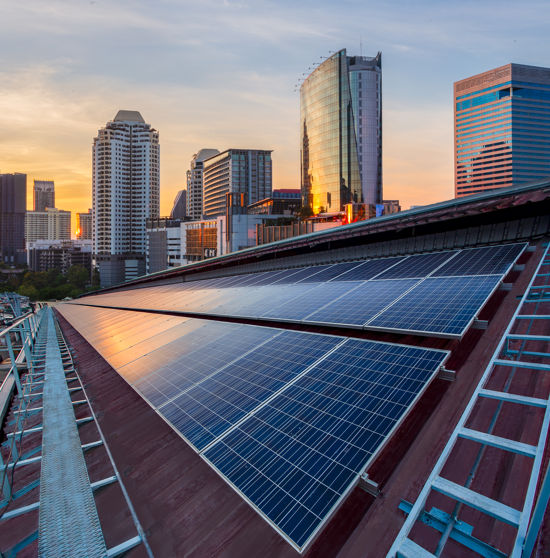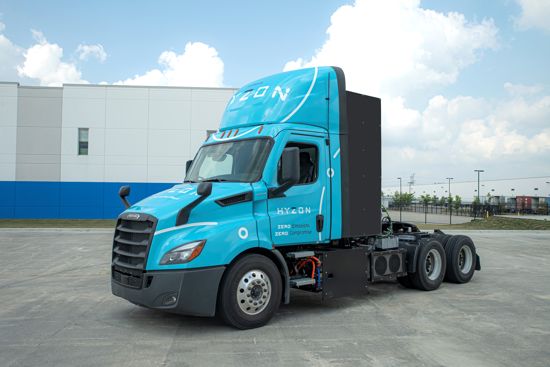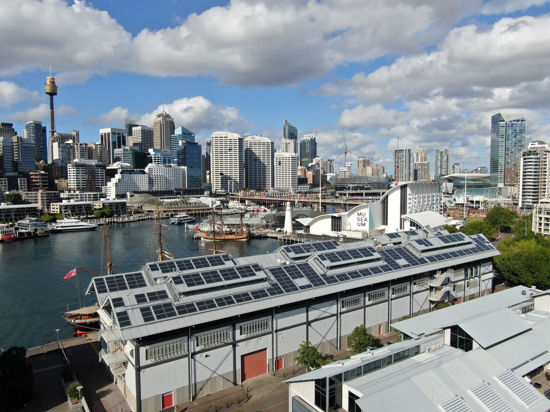Tapping into new investment models and opportunities
Developing new financial markets and products, building investor confidence and crafting tailored and innovative investment solutions for new and emerging industries to help Australia meet the challenges of decarbonisation and create a strong low emissions economy of the future.
In this section
Debt markets
Alternatives
Hydrogen
Cleantech innovation
CEFC context
Australian-first climate bonds, green home loans, electric vehicle and asset finance programs
The CEFC has an active role in shaping the emissions transition of Australia’s sizeable debt markets. Tailored CEFC asset finance programs, developed with co-financiers, have contributed to the growth in discounted green finance products for smaller-scale agriculture, business, manufacturing, property and vehicle loans. CEFC investments have also helped drive the growth of Australia’s important green and sustainability-linked bond market and the emergence of innovative securitisation models to kick-start the green home loans and electric vehicle markets. Market participants, including the CEFC, are increasingly looking to develop clear standards and frameworks to underpin the integrity of these instruments. In 2022, this saw the CEFC lead the creation of a Market Guideline on ESG Disclosure for the Australian Securitisation Forum, the leading industry body representing participants in the securitisation and covered bond markets. Over time, the Market Guideline is expected to drive a meaningful uplift in reporting and disclosure standards across the market.
Market context
The heightened focus on net zero emissions is seeing sustainability-themed issuances gain momentum, with issuers and investors increasingly including ESG considerations in their investment portfolios, policies and due diligence processes
Globally, BloombergNEF reported sustainable debt issuances reached US$1,605 billion in 2021–22, up 16 per cent on the previous year and reflecting post-pandemic market recovery. Overall, sustainable debt issuances in Australia reached US$42 billion (AU$61 billion) in the reporting year, a lift of 137 per cent, with the Australian market catching up on global trends towards sustainable finance. Sustainability-linked loans led issuances in the Australian market in 2021–22, at US$19 billion (AU$28 billion), up 265 per cent, evidence Australian issuers are recognising the substantial opportunities of this investment class. The Climate Bonds Initiative is forecasting continued market development, with an increase in adaptation and resilience-related issuances, as well as sovereign sustainability bonds. Renewable energy and low carbon–related technologies are expected to continue to dominate sustainability issuances, with investors also likely to increase their evaluation of the quality and clarity of issuers’ net zero transition strategies. The global development in ESG taxonomies is expected to continue in 2022–23.
CEFC context
Mobilising new sources of private investment via listed, unlisted and private funds
The CEFC is building a diverse portfolio of alternative investment products to broaden its reach into areas of the economy with the potential for significant emissions reduction. The approach reflects the complexity of decarbonisation at the sector-specific level and the need for a variety of investment approaches and technology solutions. As an equity investor, the CEFC is able to increase decarbonisation ambition levels through active engagement in asset selection and development, emissions management and reporting. CEFC investments in the alternatives space include large-scale institutional funds, backing for specialist new emissions-focused funds and expanding our involvement in private equity as a means of addressing the carbon footprint of mid-market companies. The CEFC is also seeking to expand impact and natural capital investment solutions, as well as invest in the development of Australia’s carbon markets, where investable solutions are relatively immature.
Market context
Achieving net zero emissions is becoming the “new normal” for investors, lenders, customers, and regulators, as reflected in latest responsible investment data showing a 12-month $298 billion lift in the value of responsible assets under management in Australia
According to the Responsible Investment Benchmark Report Australia 2022, Australia’s responsible investment market reached a record $1.54 trillion in assets under management in 2021, up from $1.28 trillion a year earlier. The increase in investment size was reflected in an increase in market share, which lifted to 43 per cent of the total market of professionally managed funds, up from 40 per cent the previous year.
While there is a mid-term focus on achieving net zero emissions by 2050, markets are facing increasing pressure to meet substantial nearer term goals, including halving emissions by 2030. In parallel, regulators across multiple jurisdictions are moving towards mandatory sustainability reporting. These factors are shaping alternative investment products, across listed, unlisted and private equity funds, as well as the emerging areas of natural and impact capital investments. Alternative investment products are uniquely positioned to drive the transition to net zero emissions, given their scale and scope, unique asset-level ownership stake and governance rights.
CEFC context
Kick-starting Australia’s green hydrogen economy for global potential
Australia has strong comparative advantages in renewable hydrogen, with significant high-quality renewable energy resources, a trusted position in global energy markets, good proximity to key global markets and attractive institutional investment conditions. Reflecting its strong track record in developing Australia’s renewable energy and large-scale battery storage sectors, the CEFC is seeking to encourage emerging investor interest in hydrogen where economic returns do not yet achieve investor benchmarks. This includes identifying opportunities to attract large-scale institutional capital by proving up risks to allow the market to move to larger-scale projects.
Market context
Green hydrogen has an important role to play in decarbonising hard-to-abate areas of the global economy, including heavy transportation, aviation and shipping
Equally, the chemicals, steel and heavy industrial sectors are increasingly looking to green hydrogen as a viable alternative to fossil fuels.
The International Energy Agency reported global hydrogen demand of 90 Mt in 2020, with encouraging signs of market progress. Global capacity of electrolysers doubled to just over 300 MW in the five years to mid-2021, with a potential pipeline of almost 90 GW under development. If all those projects are realised, global hydrogen supply from electrolysers could reach more than 8 Mt by 2030. While significant, this is still well below the 80 Mt required by that year in the pathway to net zero CO2 emissions by 2050 set out in the IEA Roadmap for the Global Energy Sector. Geoscience Australia has found that the identified coastal land suitable for hydrogen production in Australia could more than meet the expected 2050 global demand for renewable hydrogen.
CEFC context
Supercharging investment in our cleantech future
The Clean Energy Innovation Fund is the largest dedicated cleantech venture capital investor in Australia, drawing on CEFC finance and expertise to invest in innovative businesses focused on reaching net zero emissions. The Innovation Fund invests in companies with experienced and capable management teams, a competitive edge in technology and innovation, and the potential for both domestic and global market application of their technologies and solutions. It aligns these companies with cleantech investors, who are motivated by the positive environmental impact of cleantech innovation, as well as commercial potential and robust business fundamentals. Refer to Appendix H.
Market context
The transition to a net zero economy is creating enormous opportunities for new technologies, new business models and rapid innovation and commercialisation
Opportunities exist across all areas of the economy, particularly in the high impact areas of renewable and distributed energy, mobility and smart cities, food and agriculture and new approaches to manufacturing and recycling. With no single solution to the complex challenge of economy-wide emissions reduction, Australia’s cleantech innovators and entrepreneurs are part of a global race to capitalise on the sustainable economy of the future.
Clean Energy Innovation Fund portfolio in detail
The Innovation Fund achieved lifetime investment commitments of $163 million to 30 June 2022, including direct and follow-on investments in 49 transactions. Significantly, CEFC investments through the Innovation Fund have catalysed an additional $3.17 in private sector investment for each $1.00 of CEFC investment, delivering total lifetime transaction value of almost $656 million to 30 June 2022.
Lifetime commitments through the Innovation Fund have included $108 million in initial CEFC investment to 25 individual companies, complemented by a further $55 million from the CEFC through follow-on commitments to support continued growth.
The Innovation Fund added six companies to its portfolio in the 2021–22 year, with new investments of $11.3 million. It also made follow-on investments of $34.1 million to 10 existing portfolio companies, with strong participation in ongoing capital raisings supporting company growth. Private sector leverage for the period was $4.45 for each dollar of CEFC capital invested. The comparatively higher leverage in the 2021–22 year reflects strengthening investor interest in cleantech start-ups in the context of the heightened ambition to achieve net zero emissions.
With reserving for follow-on investments in existing portfolio companies, the CEFC expects to deploy more than the notional $200 million originally allocated to the Innovation Fund. The scale and strength of the CEFC balance sheet will see the CEFC continue to invest in the cleantech sector, drawing on capital from the CEFC core fund and/or investing through Virescent Ventures. This flexibility and collaborative approach demonstrates the strength of our continuing commitment to the cleantech sector.
Innovation Fund investment commitments: 2021–22
| New commitments | $m |
| Novalith | 1.91 |
| All G Foods | 5.00 |
| Samsara Eco | 0.75 |
| Downforce Technologies | 1.62 |
| MicroTau | 2.00 |
| Follow on commitments | $m |
| Relectrify | 1.15 |
| Loam Bio | 4.16 |
| Zoomo | 4.99 |
| JET Charge | 6.03 |
| Greensync | 0.15 |
| Zen Ecosystems | 0.95 |
| Gridcognition | 0.63 |
| Samsara Eco | 3.35 |
| Morse Micro | 3.00 |
| Sunman Energy | 9.69 |















